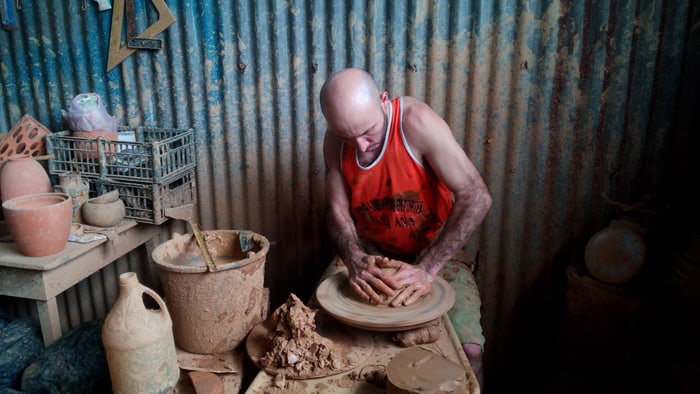SALITRAL, San José — Carlos Marín had already finished giving me a tour of his pottery workshop, from the clay pits to the oven to the warehouse, when I asked him how he makes the big flowerpots. Instead of answering, he just grabbed a hunk of clay, sat down at a wheel and started making one.
With the touch of a button, the wheel started spinning, and he expertly shaped it with his hands until in almost no time he had the rough outlines of a big pot. I got the feeling he could do this with his eyes closed, if not in his sleep.
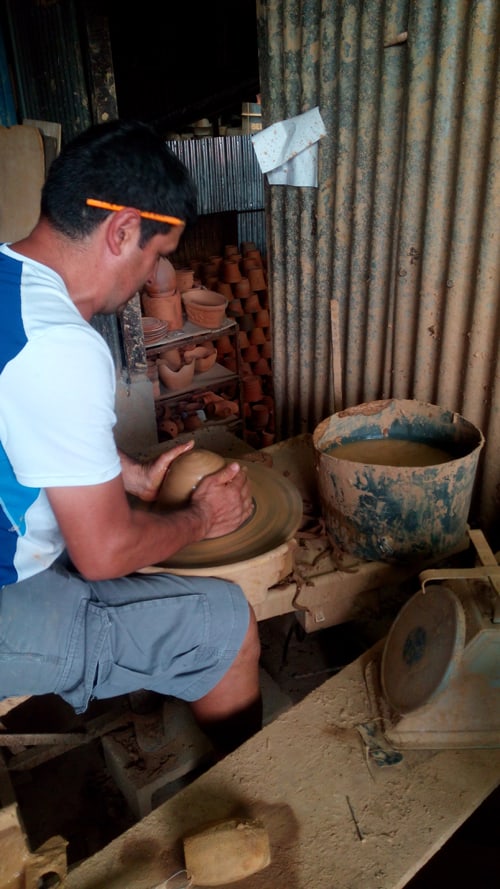
“How many of these have you made in your life?” I asked.
He laughed. “I spent 14 years making 1,000 a week,” he said. I laughed even harder. “The same ones. I was about to go crazy.”
Carlos is owner of Cerámica Artística Salitral, the oldest and possibly largest pottery workshop in the Santa Ana region, which is famous for this type of pottery.
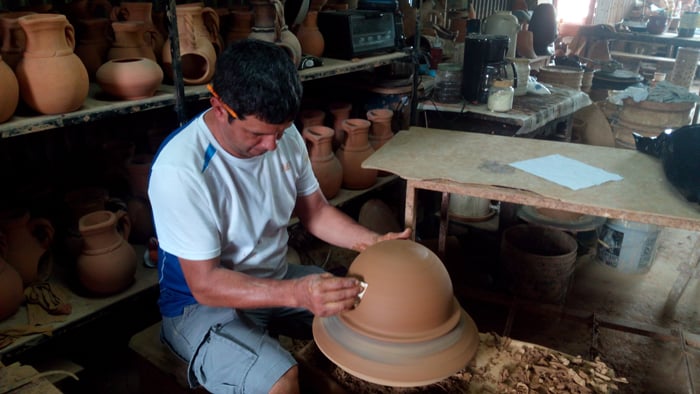
Within minutes the pot was shaped, decorated and done, and Carlos applied the final touch: a stamp with the artist’s signature, CMarín.
“This workshop is 41 years old, and I’ve been working here 33 years,” he said. He is 45 years old, so you do the math. “I didn’t study; I learned the trade.”
Whatever his education level, Carlos was as sharp as the blades used to hone his clay, and he was welcoming and witty on an impromptu tour of his large workshop.
He pointed out an old pedal-driven pottery wheel, now replaced by the electric versions. “Very tiring,” he said. “This is a lot easier.”
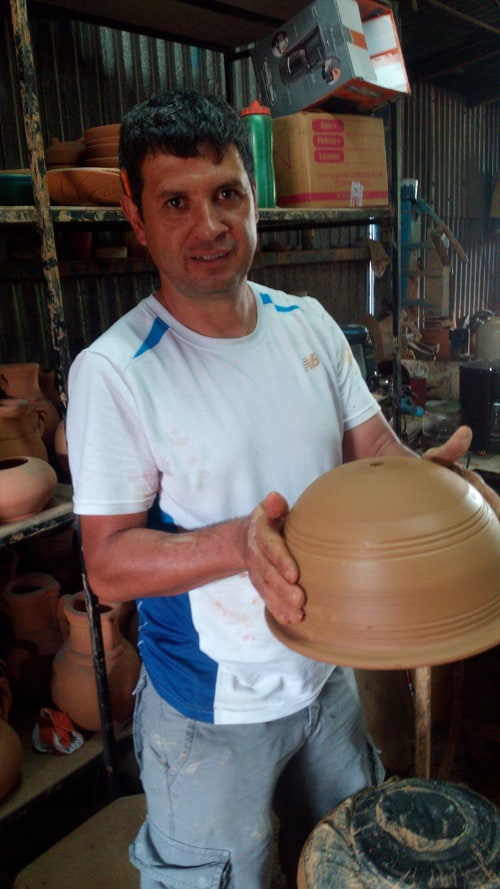
Located on the uphill side of the main road that leads from Santa Ana into the picturesque mountainside village of Salitral, Marín’s family business has a huge showroom full of beautiful masks, sculptures, lamps, wall hangings and, of course, pots. There are several smaller stores of this type down the hill in Santa Ana, but I wanted to find one with a workshop where the magic actually happens.
I came to the right place.
The shop is run by Carlos, his wife, Ingrid, and their gregarious, English-speaking son, Luis. Carlos oversees production while Luis and Ingrid mind the store, though the latter also paints and puts finishing touches on the merchandise.
Carlos walked me through the warehouse, where there were shelves bursting with hundreds, possibly thousands, of finished pots, bases and other products.
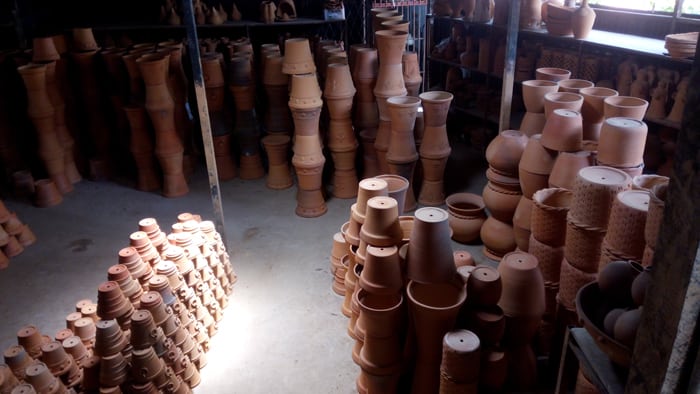
We came to a second room where an intense young man with a shaved head, tattoos and gigantic hands was shaping platos, the bases for the flowerpots. He looked like the lead singer in a punk rock band.
This worker, whom I mentally dubbed Hairless Potter, cut a chunk of raw clay, weighed it on a scale (2 kilos), dumped it on his wheel, kneaded it with his freakishly long fingers and started spinning. In seconds it took the shape of a plate, which he fine-tuned with homemade tools that Carlos identified as the tip of a machete and a random piece of rubber.
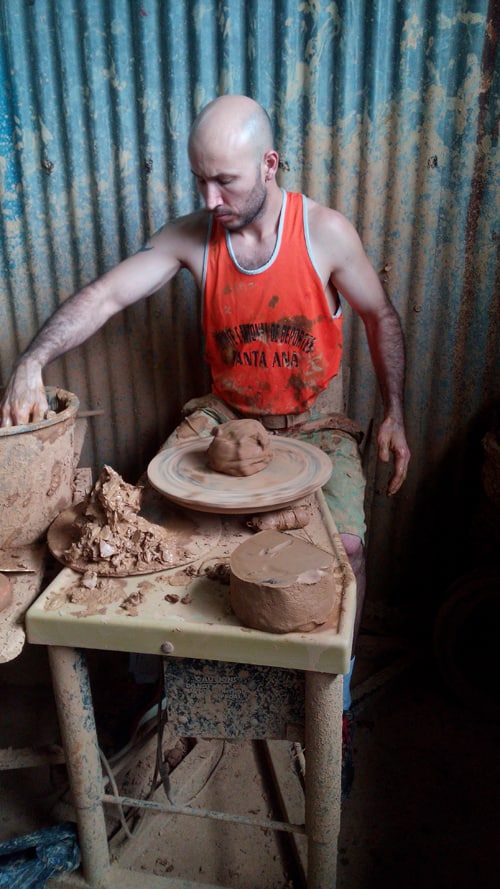
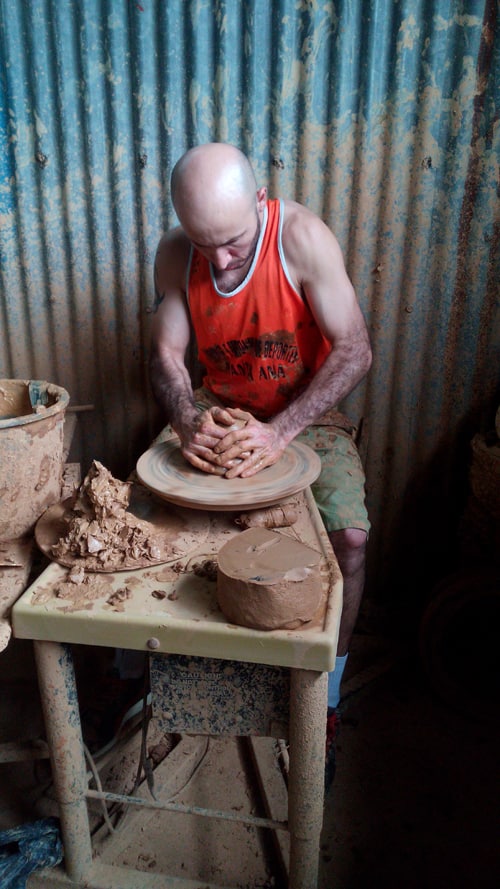
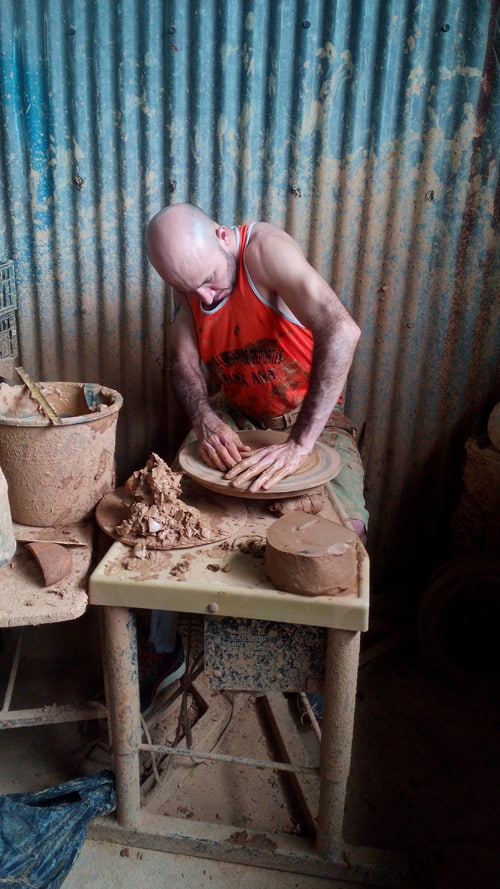
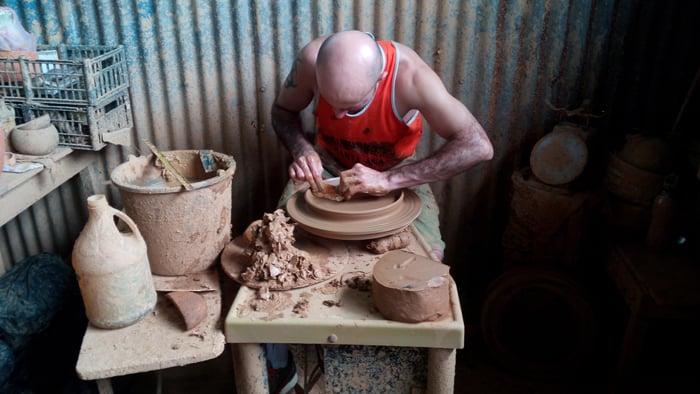
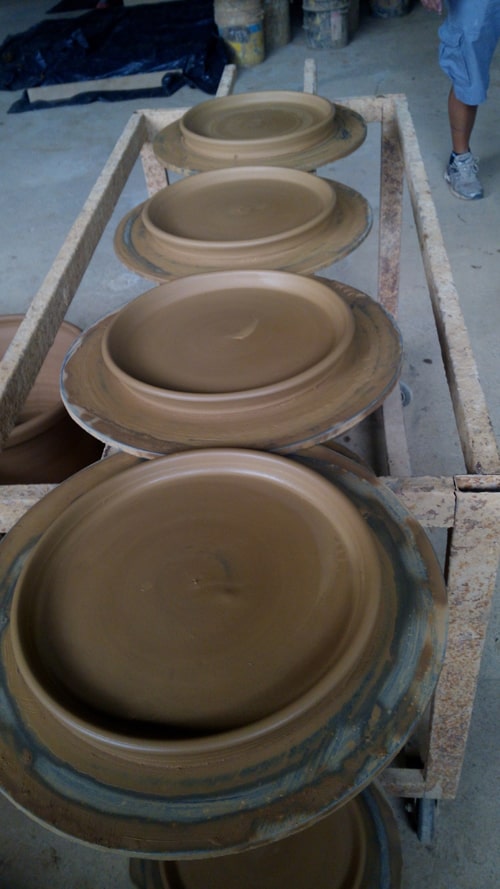
Carlos showed me the big kiln where all the pots are fired, in a technique that if I’m not mistaken is as ancient as Mesopotamia. The main kiln is heated by side ovens with firewood from the scraps of a pallet factory.
“The heat goes in, rises into the chamber, comes down over the pieces and goes out the chimney,” Carlos said. “It reaches up to 1,000 degrees inside.”
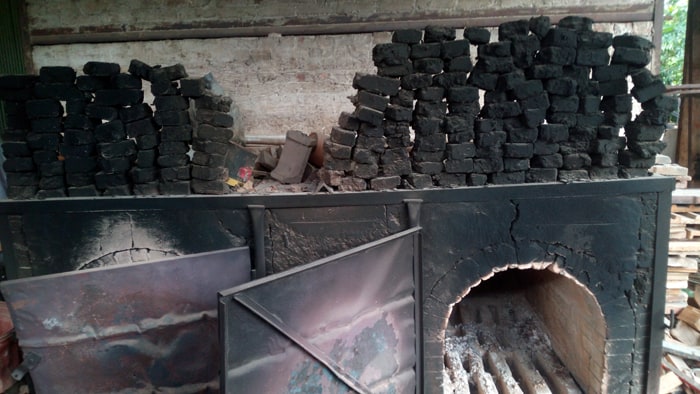
As a heavy-set man bustled past us carrying stacks of pots, we moved on to the backyard, where Carlos lifted hard plastic covers to show me several clay pits, where clay was in various stages of saturation and dehydration, awaiting the perfect consistency for the wheel.
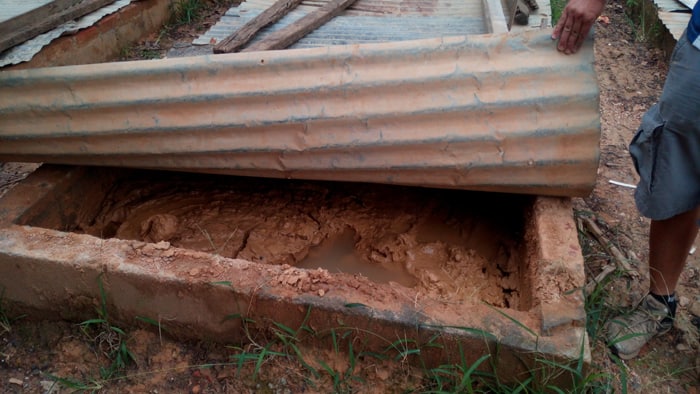
“It’s aged for about a month, a month and a half here,” he said.
The clay is quarried from a spot about a kilometer away, he said, and brought here for mixing and processing. He showed me a shed where four types of clay are mixed.
“There’s a big mixer, it’s mixed and it’s passed through a sieve to strain it,” he said. Then the clay is taken to the pits, where it’s saturated with water from the well and then dried to the right consistency.
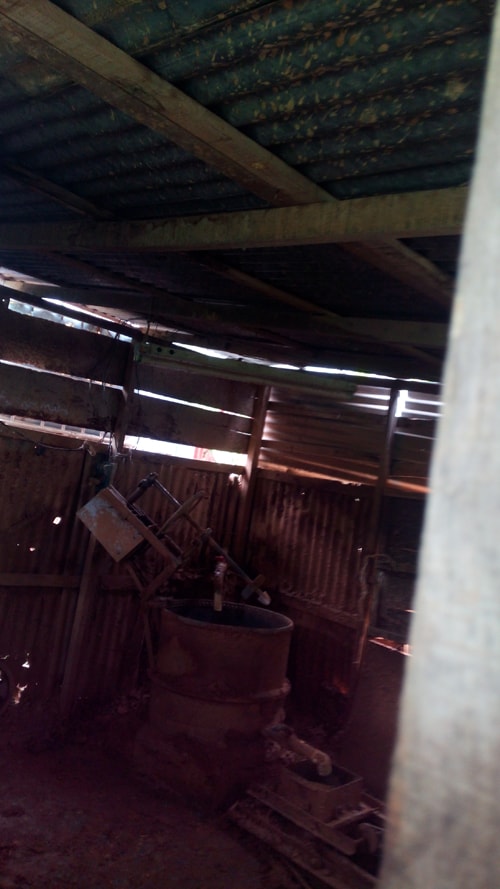
“And then it’s taken there where the muchacho is working,” he said, referring to the punk rock potter.
I marveled at the giant chimney above the oven.
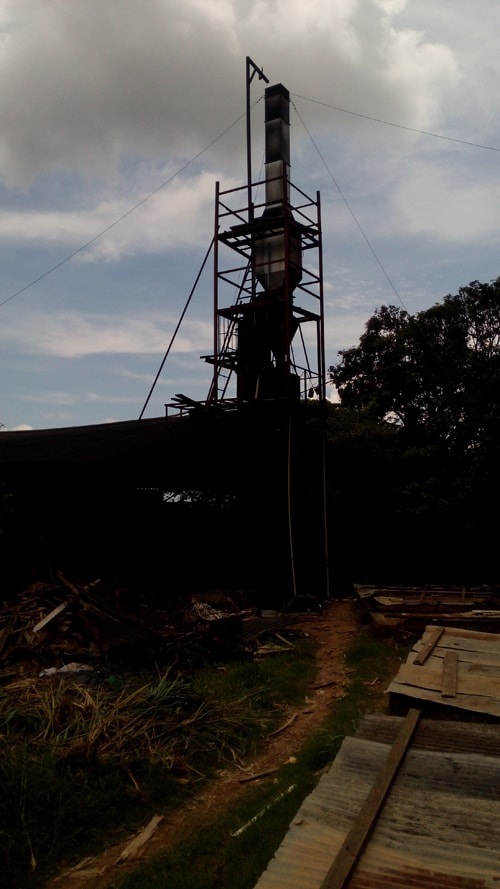
“Yes, it has a smoke filter,” he said, to reduce air pollution. “You see those two pumps? Those are two special pumps for hot water, because the water reaches nearly 100 degrees there, like 92 degrees. So when the smoke passes through that chamber, there are high-pressure water sprayers, and [the soot] falls into the tank. So the smoke comes out 80, 85 percent clean. Some [soot] always gets through, but it’s much cleaner. It’s the only filter in a ceramics factory in Santa Ana.”
How very Costa Rican, I thought — a clean pottery factory.
I paused to wipe a thick deposit of clay off the bottom of my shoes that looked like a giant dog turd.
“El que no se llena de arcilla en un taller no estuvo en un taller,” Carlos remarked. (Anyone who doesn’t get clay on them in a workshop was not in a workshop.) Tico pottery factory humor.
Back in the oven room, the heavyset man was picking up pots one at a time, tapping each one with his knuckle, and adding it to a stack.
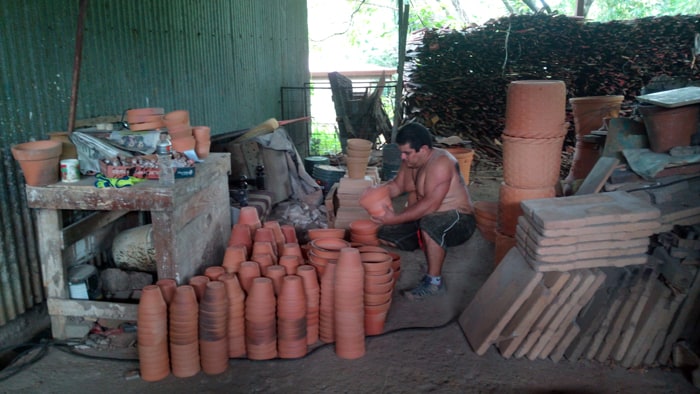
“Why is he tapping them?” I asked.
“To make sure they don’t sound like this — listen.” Carlos picked up a lamp and tapped it, and it made a thud. “If it sounds like this, it’s broken.”
Soon the curious extranjero was handed back to Marín the younger, who showed me an impressive sculpture of two wrestlers grappling, which he said was made by a Cuban artist. Unfortunately, some visitor had snapped off one of the wrestlers’ fingers, so the piece was doomed to gather dust in the bodega.
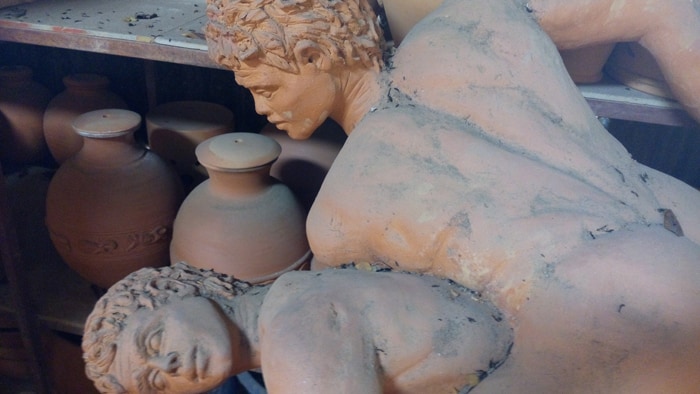
“Couldn’t you glue it?” I asked.
Sure, they could glue it, but guess what? No matter how exceptional the piece, this shop doesn’t sell flawed work.

Back in the showroom, I admired three stunning sculptures of nude, seated, masked women. Luis said those were also done by the Cuban artist, who unfortunately has moved to the United States. I asked him how much for these sculptures and he said $400, which I thought was eminently fair.
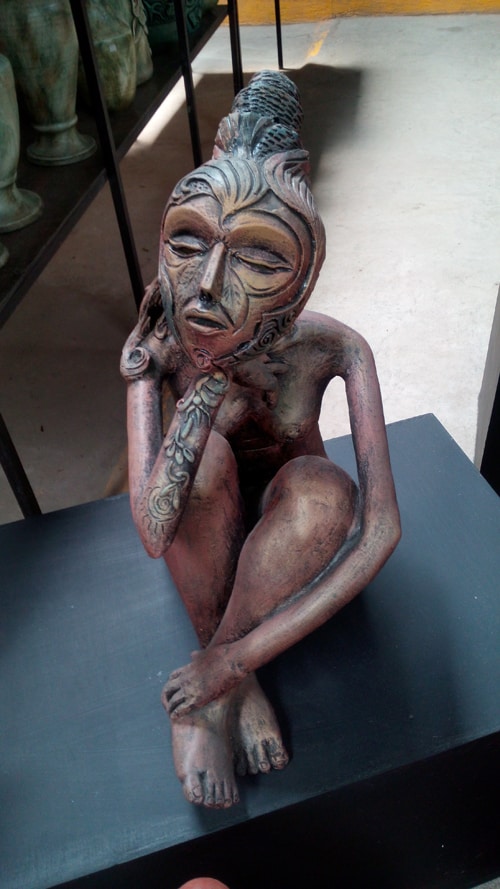
“That looks like wood,” I said, pointing to a gorgeous brown mask hanging on the wall, selling for just $20.

“It looks like it,” he said, “but….” He took it off the wall and showed me the orange clay in back.
“Top secrets,” he said.
This article, one in a series on “Costa Rica’s Least Known Greatest Places,” is sponsored by Hotel Alta Las Palomas, a boutique luxury hotel between Santa Ana and Escazú, featuring the award-winning La Luz Restaurant. Contact Hotel Alta at info@thealtahotel.com or at 2282-4160.
Contact Karl Kahler at kkahler@ticotimes.net

